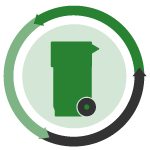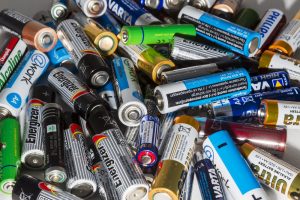 Some lawmakers say it’s time to update Pennsylvania’s 30-year-old recycling law, and an Indiana elementary school wins the Recycle-Bowl competition.
Some lawmakers say it’s time to update Pennsylvania’s 30-year-old recycling law, and an Indiana elementary school wins the Recycle-Bowl competition.

 Some lawmakers say it’s time to update Pennsylvania’s 30-year-old recycling law, and an Indiana elementary school wins the Recycle-Bowl competition.
Some lawmakers say it’s time to update Pennsylvania’s 30-year-old recycling law, and an Indiana elementary school wins the Recycle-Bowl competition.
 Last year closed with record-setting numbers for battery collection and recycling in North America, according to stewardship group Call2Recycle.
Last year closed with record-setting numbers for battery collection and recycling in North America, according to stewardship group Call2Recycle.
Maine legislators are mulling a wide-ranging bill meant to help the state meet its 50 percent diversion goal.
 Vermont’s law mandating that producers fund the takeback and recycling of single-use batteries has helped significantly boost battery collections in the state. Meanwhile, collections are trending upward across the U.S. and Canada, according to Call2Recycle.
Vermont’s law mandating that producers fund the takeback and recycling of single-use batteries has helped significantly boost battery collections in the state. Meanwhile, collections are trending upward across the U.S. and Canada, according to Call2Recycle.
 Many municipalities struggle to find downstream uses for recovered glass, but one study offers a bit of hope for a modest new end market.
Many municipalities struggle to find downstream uses for recovered glass, but one study offers a bit of hope for a modest new end market.
When Energizer developed a battery with 4 percent recycled content, company officials agonized over whether to market the achievement to the public. The concern was the 4 percent figure would leave consumers asking, “Why not more?”
Vermont regulators have chosen Call2Recycle to manage the nation’s first extended producer responsibility program for single-use batteries.
Representing a dozen battery manufacturers, battery stewardship organization Call2Recycle will submit to Vermont regulators a plan for the collection and recycling of single-use batteries.
Nearly 6,000 tons of batteries and cell phones were collected for recycling by Call2Recycle in 2014, marking a new record for the manufacturer-backed group.
An artificially intelligent optical sortation device has started sorting some of the millions of pounds of batteries collected across the U.S. by stewardship group Call2Recycle.
